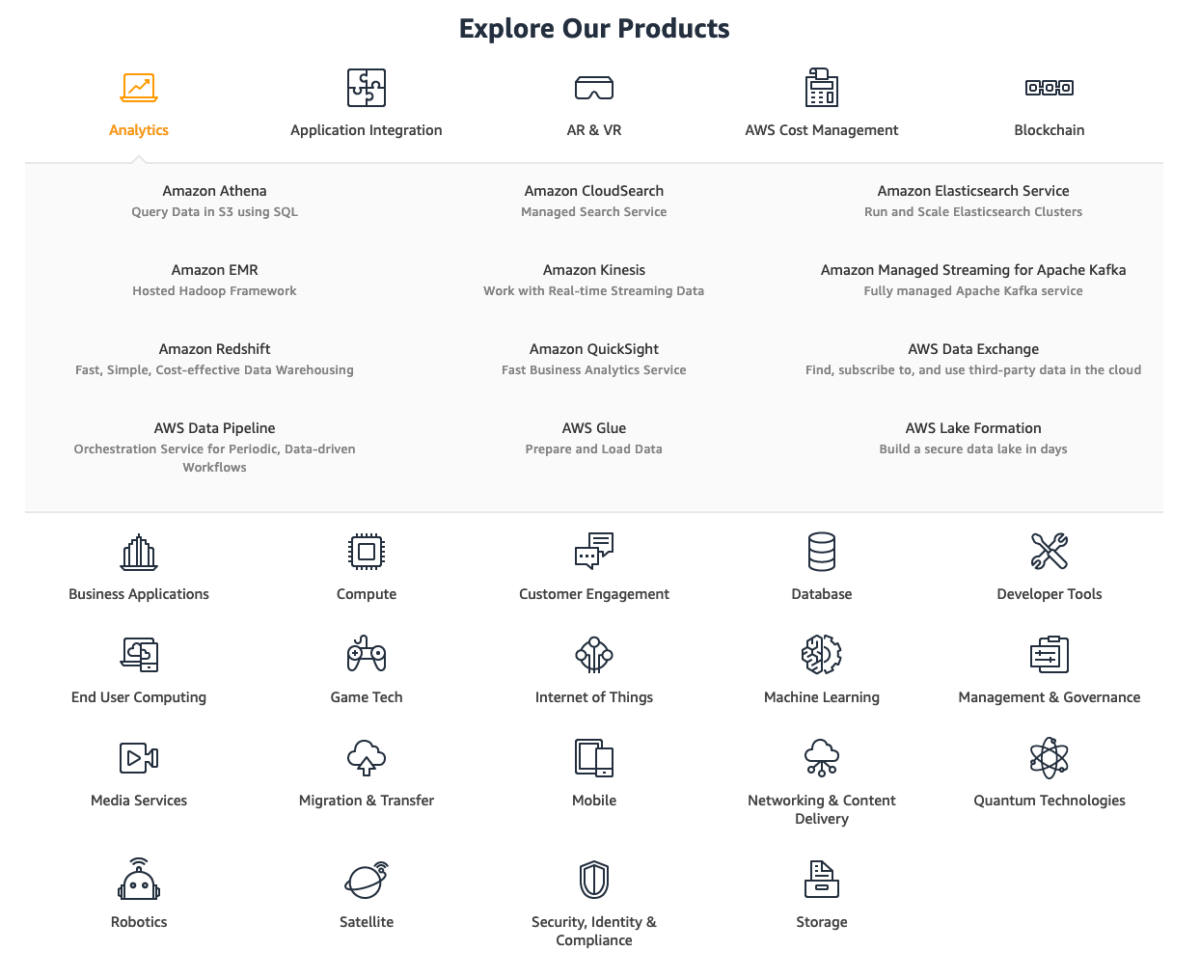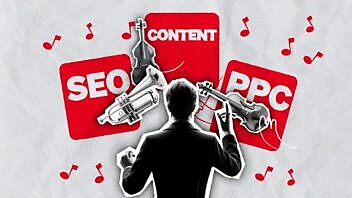For almost every B2B company, the biggest competitor isn’t another company.
The biggest competitor is inertia.
When your prospects decide that things are okay as they are.
Despite that, most B2B brands spend a lot more time worrying about their various named nemeses than they do helping prospects understand the need to change.
Over the years, we’ve been pretty evangelical about this idea (including in the terribly-named-but-oh-so-relevant Irresistible Content for Immovable Prospects).
But lately, it’s become clear there’s a bigger problem out there. An obstacle that’s stopping prospects from buying even when they’re convinced they need to change.
The problem is buyer confusion and it’s a pernicious little bastard. In fact:
Confused buyers might be the single biggest obstacle to successful B2B marketing today. And it’s entirely self-inflicted.
Whoah. Big claim (the lawyers made me say “might”). Let’s do this:
The buyer confusion tax.
Buyer confusion makes a massive impact on everything you hold dear.
It does this by creating buying friction, inhibiting all the metrics marketers and salespeople care about. Including the big ones:
For marketing:
It frazzles the edges of your positioning, denying your brand a crisp, clear place in the prospect’s mind.
It kills engagement by hiding your answers to key questions like, “Why should I care about this?”.
It depresses conversion rates, making it easier to succumb to inertia rather than commit to that click.
For sales:
It keeps you from seeing deals you should be invited to. (“I didn’t even know you did this!”)
It slows down deals by eroding decision confidence. (“Um… it sounds like you might be right for us but… there’s so. much. noise.”)
It loses deals to competitors who understand the power of clarity. (“I get what they do. I don’t get what you do.”)
In short, everywhere it happens, confusion slams on the brakes in the buyer’s journey.
That’s a big penalty to pay.
So it makes sense to identify moments of confusion everywhere they happen—and stamp them out, mercilessly (to the tune of La Cucaracha).
Five kinds of buyer confusion
There are lots of ways to confuse your prospects and many flavors of confusion. Here are four important ones:
Problem confusion
This is the mythical source of the River Inertia. If I don’t even know I have a problem, or if I attribute my problems to the wrong root causes, there’s no reason to even start my so-called buyer’s journey. I’ll just stay on the sofa with this bag of pretzels.
“The goal of API management is to allow organizations that create APIs or use others’ APIs to monitor activity and ensure the needs of the developers and applications using the API are being met.”
When your product does a lot of good things, the temptation is towards the common elements. But that can lead to overly-general statements and tautologies like, “This thing helps people who use this thing achieve their goals.”
Product confusion
The big one. What the hell does this thing actually do? Why do I need it? How would I deploy it? How does it fit with what I already have? How are the versions different? Clarity here is absolutely essential—and depressingly rare.
“XXX performs identity resolution based on any combination of available entity record attributes by utilizing its unique proprietary search and indexing engine that allows combination of evidence from multiple matching attributes in a highly robust, scalable, and intuitive fashion.”
A real example. It’s not just the jargon that hurts here. It’s also the run-on sentence, the adjective lists, the grammar glitch (“…that allows combination of evidence…”) and… that pesky “utilizing” (ugh). [To be fair, abstract concepts like identity resolution are tough. This is a good effort.]
Tech confusion
How your products do what they do can clear up a lot of confusion. But only if you explain your technology clearly and transparently. Don’t expect that just slapping a ™ on something makes it clear. And don’t use the word “cloud” to disguise what is really just legacy software (it’s called ‘cloudwashing’ and it… clouds up your story).
“A customer data platform (CDP) is a platform used by marketers to collect all the available data about the customer and aggregate it into a single database, which is integrated with and easily accessible from a number of other marketing systems and platforms used by the company.”
I’ve read a lot of definitions of CDPs and this one’s pretty clear, isn’t it? Nice one, ClearCode.
Category confusion
Closely allied to product confusion, this generates (then fails to answer) questions about your product’s relationship to other things on the market. How are you similar or different to those guys over there? Are you an XYZ player or more in the ABC sector? These category questions can be a huge obstacle to progress. Analysts make big bucks trying to sort it out for buyers (with varying degrees of success).
“So how about CXTech? Where the C stands for Communications Experience Technology, or Connectivity Experience Tech, or Conversation Experience Tech, or Collaboration Experience Tech, or Customer Experience Technology. We’re the enabling technology across all these experiences. Whether its customers (CCaaS, MFA, omni channel) , or things and networks (IoT, connectivity, neural hosting), or employees (UCaaS, collaboration), or the myriad of CPaaS use cases across people, things, services, and networks. We’re a fundamental enabler. “
A blogger testing out a new category name. This shows the perils of category creation for generating more buyer confusion instead of clearing it up. [He’s not claiming to have cracked it, so don’t judge this too harshly.]
Journey confusion
How do I find out more about this? How do I buy it? Where is the product page I’m looking for? What do I do next? This resembles the classic web UX stuff but on a much broader scale than just the website.

[Disclosure: a Velocity client] [Meta-disclosure: a humblebrag]
I scribbled down lots of other kinds of confusion, but they all fit pretty well in one of the above buckets, so let’s stick with these.
The point is that there are different kinds of buyer confusion and they can pop up everywhere…
Where buyer confusion pops up.
It pops up wherever you communicate with a prospect:
On your website.
For too many B2B brands, the website is often a firehose of confusion. Maybe it’s because you own your website, the real estate feels ‘free’. So why not unfurl the entire “value prop” in all its glory? (Um, because it’s gobbledy-gook?).
Or because you have more than one offer for more than one audience—and you haven’t done your ‘web journeys’ work.
In your content.
As content moves through the review process, it invariably gets longer and blurrier, instead of shorter and clearer. Bob and Sarah need to push their pet points. Guillermo gets that sidebar on his latest idea… Soon, your clear, blue crystal turns into a grey blob.
In your emails.
Just when you really need to be super-clear (there are 90 more emails waiting to be deleted) your copywriter gets all punny, or ‘strategic-sounding’ or just waffles on.
In your social media posts and ads.
Tiny, crowded spaces put a premium on clarity. So tell your “creatives” to maybe be less concerned about being “creative” and a bit more about being clear.
In your ‘post-sale’ content.
Service & support pages, product documentation… you’d be shocked at how often your prospects often find their way to content that’s supposed to be for existing customers. So clarity here is doubly important.
Even in your straplines.
My home town had a shop called Just Shirts. Their strapline was, I kid you not, “We’re not just shirts!”. (Warning, eye-rolling during head-slapping can be hazardous to your health.)
The point here is that even if you’re super-clear in one channel, you can still befuddle people somewhere else. Which undoes all that good work.
Why marketing teams create buyer confusion instead of clearing it up.
Few marketers set out to confuse their prospects. But it happens all the time. Why?
Not really knowing your stuff – Often the marketing team is woefully disconnected from the product team and (worse) from the customers and users. Understanding exactly what buyers need to know at each stage (and what they don’t need to know) means putting in the hard work that leads to the clarity that only empathy can generate.
Knowing your stuff too well – Being too close to your own products and organizational crud is a major obstacle to clarity. Because it’s really hard to forget what you know and think about the world like your prospects do.
Trying to sound important – Trying to sound more strategic and business-critical than you really are is the fast track to confusion. And it invariably fails at its main goal anyway. Be who you are. Plainly and proudly.
Overthink and groupthink – The Frick and Frack of confusion. What’s perfectly clear in draft one will almost always be impenetrable by draft twelve.
Fear of leaving stuff out – It’s so hard to get a prospect’s attention, we tend to squander it by trying to cram every message and support point into every interaction. Relax: if you dial up the clarity and simplicity, you’re far more likely to earn more time with prospects. Chillax.
Bandwagon chasing – If you’re dead-set on getting some kind of AI or blockchain story into what really isn’t an AI or blockchain story, you’ll confuse people. And fail. See “Be who you are.” above.
Fixing buyer confusion: a UX mindset.
User Experience pros are great at this stuff. They understand that they can only win when their users achieve what they want, quickly and without too much thinking.
At Velocity Towers, we often think of content as an app, applying UX principles to producing and evaluating it. But the UX mindset works for all marketing, not just content. So here are some user-friendly bullet points to help you fight buyer confusion:
- Start with where users are – Not where you’d like them to be.
- Break down their buying experience – Into logical steps.
- Map those steps to your marketing channels – To string together potential journeys.
- Design each interaction with clarity in mind – Are you pushing a single CTA or seven? Are you using the buyer’s language or your in-house dialect?
- Now look at whole journeys – How many steps are you asking people to take? Is it obvious what to do next and why?
- Pay close attention to copy – Forget what you know: is this as clear as it can be?
- Remove ‘design junk’ – Don’t pack every white space with what my brother Lee calls “shite and onions”. Kill some of those stock photos. Be ruthlessly Kondo: does it help clarify the story?
- Test till it hurts – Show people, ideally people in your target audience, your stuff before you publish. Ask them to talk out loud as they try to accomplish the tasks you set. Quiz them.
- Use your data – Once stuff is live, watch users as they stumble through your prepared paths. Where are they getting stuck? here are they dropping out? Why?
These specific behaviors aren’t really the point. The point is to have a UX mindset and a pair of spectacles optimized for clarity. Look at your whole marketing program through these specs. Clarify like a demon. possessed.
The end game is to drive confusion out of your marketing by building a culture of clarity (ooh, tweet that shit); a place where everyone is good at spotting confusion, and exterminating it.
A question to ask your creative folks.
When a writer or design or information architect or Marketo whizz calls you over and says, “How about this?”, try this question:
“If our jobs depended on making this as clear as it could possibly be, what would you change?”
For writers, it might mean tightening that headline or stomping on that corny pun or translating that jargon into plain language.
For designers, it might mean removing that background pattern, or moving that headline away from that noisy photo or adding a table of contents…
For UX folks, it might mean user-testing the navigation, or killing the carousel, or improving the signposting on that feature box…
For marketing ops types, it might mean fewer web forms or big, clear, obvious CTAs for the email newsletter.
Call it The Clarity Pass and make it part of your process.
Some resources for fighting buyer confusion.
Don’t Make Me Think: A Common Sense Approach to Web Usability by Steve Krug – one of the foundation books in web UX.
Everybody Writes: Your Go-To Guide for Creating Ridiculously Good Content – Ann Handley’s now-classic book on writing.
DataStory: Explain Data and Inspire Action Through Story – Nancy Duarte on using data to tell clear, compelling stories.
They Ask, You Answer – Marcus Sheridan’s epic book on answering every question your prospects might have. Love this.
100 Things Every Designer Needs To Know About People – Cool ideas on designing intuitive experiences.
Conversion Optimization Made Simple: A Step-by-Step Guide – a comprehensive post by Neil Patel.
Typography for Lawyers: Essential Tools for Polished and Persuasive Documents – No really. I love this.
Enjoyed this article?
Take part in the discussion









Comments
MR DYLAN W JONES myDataBrand February 29th, 2020
I’ve advised many data solution vendors in the past, particularly vendors like the Identity Resolution folks above, on why their marketing is failing; so I recognise the above statement all too well.
The reality is, you could replace the Identity Resolution vendor above with practically every other vendor in the B2B data tech sector.
It’s a pervasive problem, the tech guys often end up ‘having a go’ at writing copy because ‘marketing don’t get it’, and they can’t understand why their websites don’t convert.
It’s a checkbox activity for them…
‘techno-centric strapline for the brochure blurb – tick’….
Perhaps the most valuable post I’ve seen written on B2B tech marketing.
Clear, simple, and with a sharp focus on the reader in mind – a meta lesson for the tech heads.
Doug Kessler March 2nd, 2020
Thanks, Dylan.
In tech, it’s always an option just to spin out a string of techno-babble and feel like you’ve actually communicated something.
Reading something with fresh eyes (or getting someone else to read for you) is a reality check!